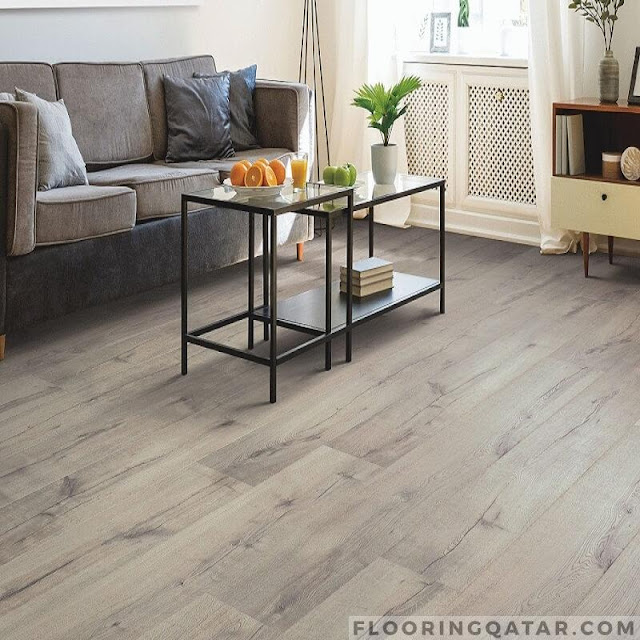Pros and Cons of laminate flooring
Developed decades ago as an inexpensive option to real wood, today’s laminate flooring manufacturers have upped their game. Better quality and dozens of types of wood species are manufactured. From American icons like oak, hickory, and heartwood pine to exotics such as tiger wood and Prado are available.
There are rustic and antiqued versions too in case you want your floor to look as if it’s been there for centuries. Moreover, many manufacturers throw in an increasingly varied portfolio of stone, tile, and metal look-alikes.
All these varieties are due to the photographic process used to create the design layer of laminate flooring. A high-resolution image of actual wood is vividly realistic. The image is printed and glued to a core of fiberboard together with a bottom layer that’s treated to prevent moisture damage. It’s all covered by a tough and clear top wear layer that resists scratches and dings.
With this vast array of choices, here are the pros and cons you need to know:
Pros
Generally, laminate flooring comes as planks or tiles. The edges are designed to snap together so there’s no nailing, making installation a good DIY project. The laminate construction provides the stability of the piece and prevents seams from opening up during changes in humidity.
Lightweight laminate flooring is installed over a thin foam cushion underlayment. That makes it good for installations over most existing flooring with the exception of carpet eliminating the need for tear-out.
Snap-together laminate flooring removes the need for VOC-releasing glues.
Old-growth or exotic trees are not used to produce laminate flooring.
- The wear layer of the laminate floor is really tough, which makes cleanup and maintenance easy. Occasional sweeping helps the surface free from abrasive grit
Laminate flooring is cheaper than wood
Laminate flooring can be bought about half the price of wood flooring. However, as with wood, you’ll find a wide range of varying quality. A few look more realistic than others, and some are less substantial in the thickness of the layers. It makes them more likely to wear out sooner than a higher-quality product. You’ll find laminate options starting at less than $1 per square foot and topping out around $5 per square foot.
There’s an option for virtually every style
All of the laminate floorings have a core layer topped by an image layer, into which a digitally enhanced photo of natural material is embedded. It mimics everything from exotic hardwoods to concrete to natural stone—a major pro. It has a variety of colors, lengths, and widths. These days texture can even be embossed to give the flooring a realistic feel.
Maintenance and Repair
Laminate floors are easy to clean with a vacuum cleaner or broom. Use a slightly damp mop, or better, use laminate floor cleaner. No floor waxing is always necessary for laminate floors. Avoid excessive water when mopping, which can seep into the seams between boards, causing swelling.
Cons
Even the best laminate flooring is prone to moisture damage and shouldn’t be installed in laundry rooms and rooms with floor drains. Installations on basement floors should include a moisture barrier. Laminate flooring in the kitchen is good as long as you’re diligent about cleaning up spills and splashes.
Laminate flooring in the bathroom isn’t suggested unless all edges are glued during installation and the perimeter is sealed with silicone caulk.
Laminate flooring can’t be refinished unlike the real wood, so once it’s worn out; it’ll have to be replaced. Avoid cheap laminate flooring.
The wear coating of the laminate floor contains plastic that doesn’t degrade in landfills. A number of laminate materials may be made with formaldehyde and other chemicals that can release toxic VOCs.
You can’t refinish it.
Regardless of technological advancements in laminate flooring, it still gets its look solely from the image layer. It can’t be sanded and refinished when it starts getting worn. Wood can be revived multiple times over its lifetime, with the potential to last decades. While the upfront price might be right for laminate, in the long run, wood might be a better buy. In addition, wood offers a high return on investment in terms of your home’s resale value.



Comments
Post a Comment